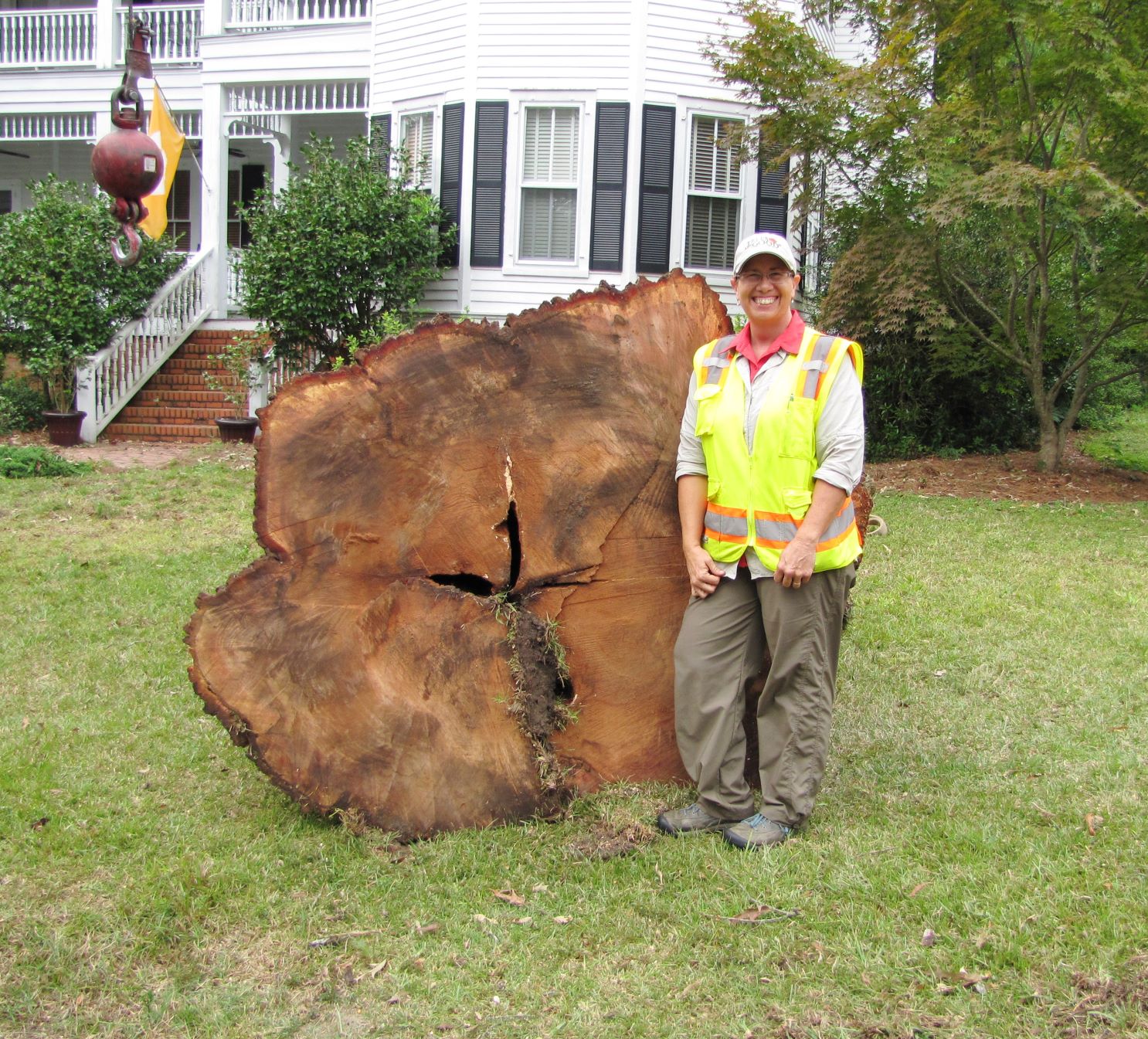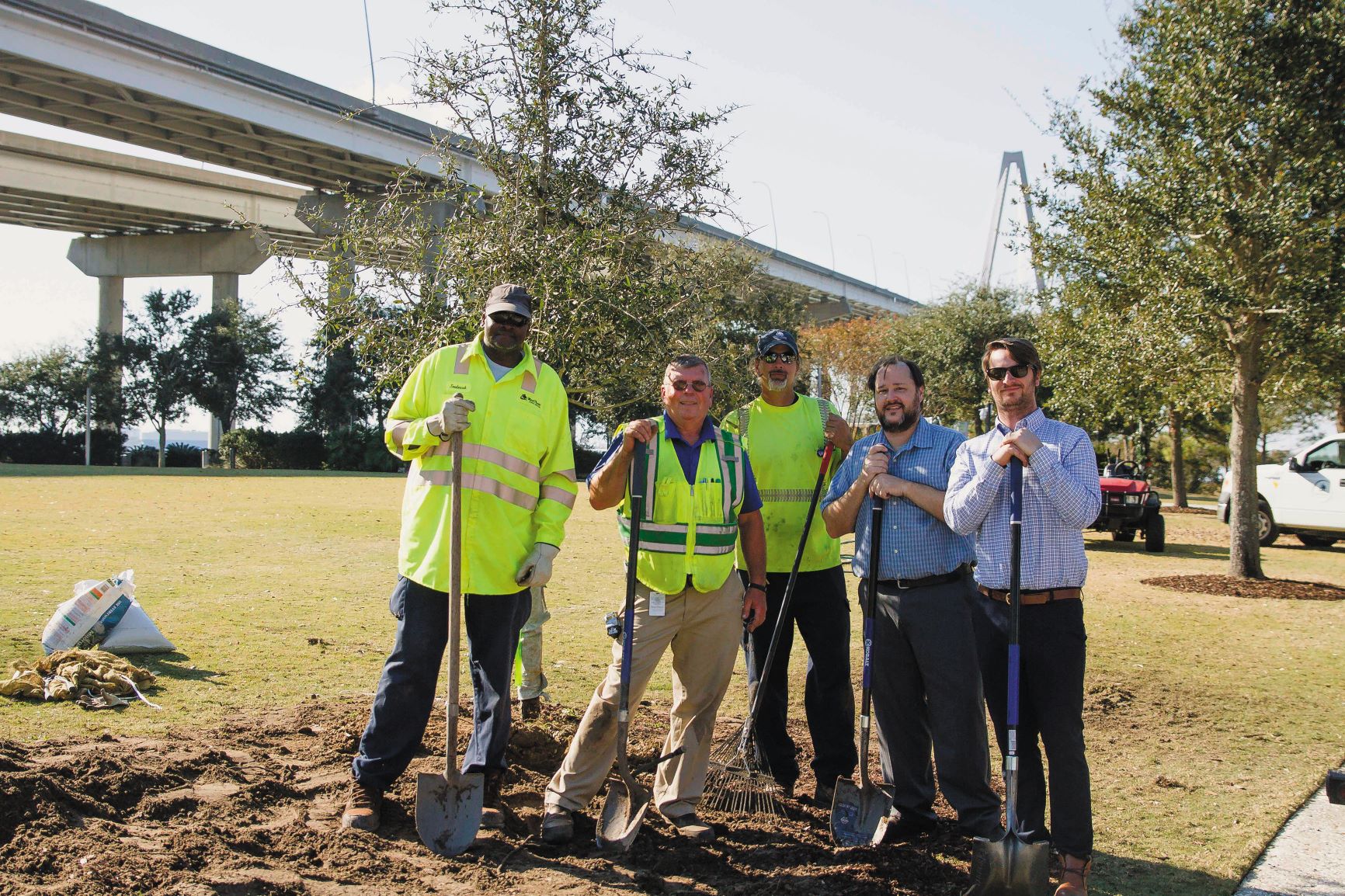Whether they are lining sidewalks and shading downtown districts, filling out city parks or creating concerns for utility lines, trees are everywhere in cities and towns, and they have to be managed. This can be the job of the city arborist, who is sometimes also known as urban forester or landscape architect. They rarely have just one title, and sometimes perform all the necessary tree work themselves.
A city arborist helps a municipality regulate the removal of damaged or dangerous trees, orchestrate the planting of new trees and works to make South Carolina greener for future generations. The job isn’t all about beauty. Trees provide shade that can reduce air cooling needs — estimated savings number in the billions of dollars nationwide — as well as providing a habitat for wildlife. Trees help reduce stormwater runoff and air pollution and are a key component of fighting climate change.
There are times when the needs of trees bump into the wants and needs of people. Often in those cases, the city arborist helps educate the public and enforce the rules and regulations governing trees and green space.
A watchful eye
Liz Gilland became the City of Camden’s first urban forester 11 years ago. Her duties have changed recently as she has also been charged with oversight for city streets and parks, but tree management remains a priority for the state’s oldest inland city.

Liz Gilland, Camden’s urban forester, stands next to a 200-year-old red oak which had to be removed after storm damage. Photo: City of Camden.
“Camden as a community has always cared about the tree resource,” Gilland said, citing documentation of a city tree-planting ordinance dating back to 1798. “We’ve always been rich in a tree canopy and as a Tree City USA, we have had a volunteer tree board.”
However, she said the management of trees has not always been proactive, with tree planting once handled by a local nonprofit organization that used private fundraising. At that time, the city’s in-house crews handled removals when dead trees were identified.
After Gilland came on board, the efforts became much more proactive, beginning with an American Recovery and Reinvestment Act grant in 2010 to remove hazardous trees.
“That’s what I started out with, identifying and contracting out for the removal of about 35 trees that needed to come out,” Gilland said. “I made the rounds, doing presentations to the Rotary Club, Lions Club, Kiwanis, the garden clubs, trying to do some educational information about trees and why we were embarking on this major tree removal endeavor and also to help teach about utility-line pruning.”
Gilland said utility line pruning, which rotates through areas of the city every three to five years, tends to draw some of the most forceful resident complaints.
“Folks would start to see that and they would get upset, because it would be a change in the way the trees look,” she said.
The first few years in the position were a lot about education and that even included a monthly column in the local newspaper. Then came the planting. Each year, she said she would visit nurseries to select the trees, then contract out the planting.
“Then, during the growing months — which I still do, I have a pickup truck and a water tank each year between March and November — I water our newly planted trees for at least two years, sometimes three years. I get to drive different parts of the city and check the condition of trees in various locations,” she said. “While it is labor-intensive, you get out there in the community.”
She said community interaction allows her to do one-on-one education of the public about the importance of trees and maintaining them.
“I am a public servant, so my philosophy is I am happy to engage and help wherever I can and teach people about the value of their trees,” she said.
Restoring the canopy
In the City of Greenville, the key for Clemson-University-trained Arborist Drew Smith and Senior Landscape Architect Edward Kinney is restoring the city’s declining tree canopy — the cover provided by tree leaves and greenery — that has been reduced by development.
“It started with complaints from the community because there had been a couple of developments that brought down significant stands of trees,” Kinney said, adding that recent surveys show that the city’s tree canopy has decreased to a total amount of just over 40% of the city, and is projected to drop another 5% to 10%.
“It became obvious that we needed to start preserving the trees,” he said.
Over two years, Kinney and Smith worked on a tree preservation ordinance that looked at science, development and planning. Community input sessions included engineers, architects, environmental groups, developers and home builders.
“We didn’t come at this with an agenda; we really wanted everyone’s input,” Smith said.
What city council passed in January was an ordinance that focuses on replacing trees lost to development, and finding ways to be mindful about the removal of trees.
“If I take down a tree in front of your house, I will ask you to donate the cost of a new tree in front of your house to replace that,” Smith said.
Developers must now obtain permits for any “land-disturbing activity,” and that triggers a survey of trees on the property and those that are slated to be removed.
“A developer who clears a lot has to replace trees one-to-one,” Smith said. “And if they can’t put the tree material back onto the lot at that one-to-one ratio, they pay a fee on any tree that’s over six inches [in diameter.]”
That money from these fees enters a fund that the city can use to purchase new trees elsewhere, purchase new green space for the city, cover maintenance of the existing tree canopy and to help pay for future tree surveys.
Balancing competing interests
For the Town of Mount Pleasant, trees are an essential part of keeping balance in an ecologically sensitive area that includes delicate marshlands. And for more than 20 years, Eddie Bernard, senior planner, landscape architect and certified arborist, has been monitoring the canopy over the fast-growing town.

Eddie Bernard, second from right, is the senior planner, landscape architect and
certified arborist, for Mount Pleasant. Photo: Town of Mount Pleasant.
Some of the town’s trees include the iconic oak-lined drive at historic Boone Hall Plantation. Even though they are not owned by the city, such trees are still subject to the town’s tree ordinance, which governs the removal of any tree more than 16 inches in diameter, no matter where it is located inside the municipality. There are some rules on how trees can be trimmed.
“Most people seem to be familiar with the fact that there are laws, but a lot of people are surprised at the amount of regulation that there is for trees and greenery,” Bernard said.
During his time with the city, the town has grown from a population in the mid-30,000s to the mid-90,000s, and that has often put the interests of developers and newcomers into conflict with efforts to maintain the tree canopy. Along Mathis Ferry Road — a nearly 3-mile stretch of road designed as a state scenic highway — residents need permission to remove any trees within 25 feet of the road.
“We have a buffer there that protects everything … so people’s front yards would have 25 feet of woods effectively along the road-front there,” Bernard says, adding that handling those conflicts between people and trees is important.
“Urban forestry is not about trees, it’s about people. Anybody with training can do the right things with trees, but you have to make all this work amongst people and all the different points of view. Ownership changes over time, the politicians change frequently and of course the trees are here for decades spanning all that. So how you work with all these people over the years is key to any success in it.”
Tree removal restriction bill At the end of the SC General Assembly’s 2021 legislative session, H3989, a bill that would prohibit political subdivisions from adopting or enforcing an ordinance or resolution that restricts the removal of trees on private property, was passed favorably out of the House Judiciary Special Laws subcommittee. The bill could become law in 2022. For the latest information, visit the Municipal Association’s Legislative Tracking System and keep up with legislative action that impacts cities and towns by subscribing to the From the Dome to Your Home weekly report. |
